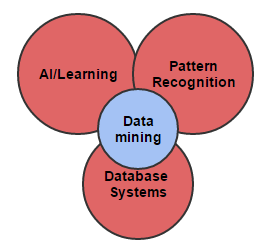Data Mining And Knowledge Discovery
How it is different from Data warehousing?

The goal of a data warehouse is to support decision making with Data mining can be use with the conjunction with data warehouse to help with certain types of decision. It can be applied to operational database with the individual transaction. To make it more efficient it should have an aggregated or summarized collection of data. Helps in extracting meaningful new patterns that cannot necessarily be found by merely querying or processing data or metadata in the data warehouse so the data mining application should be strongly considered.
Data Mining-Terminologies
Knowledge Discovery
Data Mining- Query Language
Data mining query language (DMQL) is actually based on structured query language (SQL) for DBMiner data mining system. It support interactive data mining also provide commands for specifying primitives. It can work with both databases and data warehouses. Syntax for task relevant data specification
{`
use database database_name
or
use data warehouse data_warehouse_name
in relevance to att_or_dim_list
from relation(s)/cube(s) [where condition]
order by order_list
group by grouping_list
`}
Challenges in web Mining
Web give great challenges for resource and knowledge discovery based observations:


